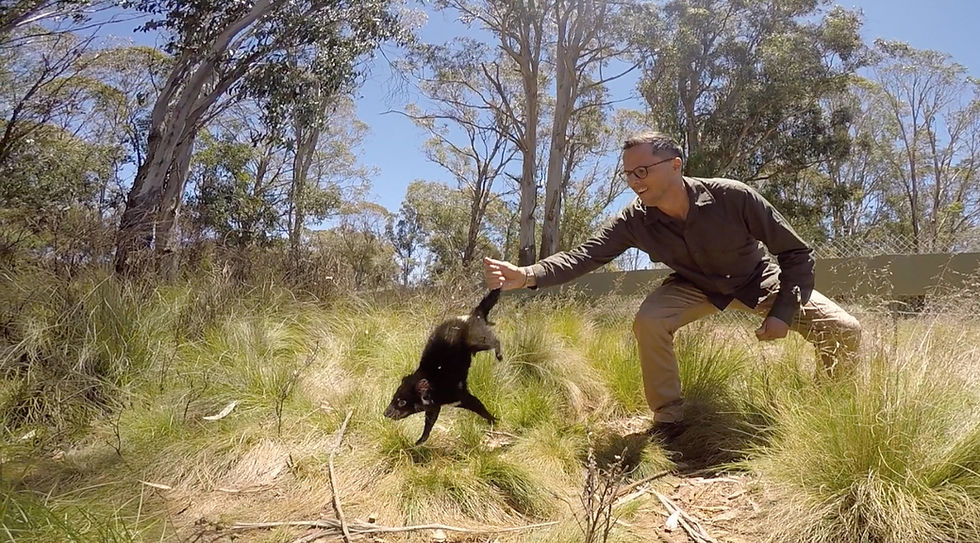The Hollow Cliff: Australia’s Paddock Trees Are Dying Out
- Gregory Andrews

- Oct 17
- 3 min read
Why we must grow the next century. #FloraAndFaunaFriday
Cycling through the wheat–sheep belt between Canberra and Melbourne to #CitSciOz25 last week, something hit me harder than any of the headwinds. The big, old trees dotting the paddocks are the last elders of a pre-clearing world - they’re sentinels holding space for Nature. But they’re reaching the end of their lives.
These paddock trees aren’t just scenery. They’re habitat pillars. Their hollows shelter parrots and cockatoos, kookaburras, gliders, possums, owls and microbats.
Think of paddock trees as a savings account of hollows. For 150–200 years we’ve been living off the interest and a fair bit of the principal. But we’ve been making almost no deposits. The balance still looks fine when you glance across a paddock, because the old trees are still standing. But hollows take a human lifetime to form; without a young cohort, there’s a moment when the account hits zero - and by then it’s decades too late to top it back up.
Right now, across Australia’s farming country, that balance is about to hit zero. Many elders are dying of age and exposure. And their seedlings are not replacing them - they’re being eaten or trampled by stock, fried by heat, knocked out by spray drift, or mown off for efficiency. Climate change is making things worse. And shiny new tech isn’t helping either: GPS auto-steer harvesting equipment hates obstacles. A paddock tree that fed a landscape for 200 years becomes “in the way”.
Some farmers are absolute champions. Holbrook Landcare, for example, shows what’s possible. But systemically Australia’s is walking into a silent crisis. We won’t feel it all at once. We’ll feel it when the chorus goes thin: fewer hollows, fewer nester, fewer young. And when it’s too late.
What works (with farming)
Protect the elders now. Fence and rest old trees from stock. Buffer against spray and machinery compaction. One old tree can carry a whole paddock’s wildlife.
Grow the next century - on purpose. Plant local species in cohorts, not lone sticks. Let natural regeneration happen in rings around elders (stock-exclusion is super important).
Make tech work for trees. Put tree islands and shelterbelts into auto-steer maps. A one-per-paddock “no-go” polygon costs little and can save a lineage of species.
Cool the ground, close the canopy. Shelterbelts and scattered clumps change the microclimate - shade, moisture, insects. They also promote livestock welfare on hot days.
Bridge, but don’t pretend. Nest boxes can help as a stopgap, but they’re not a substitute. Think of them as a bridge while the next cohort grows.
Back the locals. Support Landcare groups (like Holbrook), Sustainable Farms, and stewardship programs that recognise the public good these trees provide.
Why this matters
A paddock tree is so much more than just a tree. It’s a village: hollows, fungi, insects, birds, bats, and the animals that feed on them. When the last one dies with no young to follow, the whole village goes with it - and it takes a lifetime to rebuild.
For farmers, paddock trees are working infrastructure. They cut windspeed and hold soil, slowing erosion. Their shade drops ground temps, easing heat stress on stock and reducing water demand. Shelterbelts and scattered clumps lift pasture growth on the leeward side, protect lambing and calving, and give insects and birds the cover they need to pollinate crops and knock back pests. Deep roots help stabilise salinity and water tables, and every tree is a little carbon bank. In a drying climate, trees are the cheapest micro-climate you can build.
If you live on the land, thank you. If you don’t, this is still your story: these working landscapes feed Australia, hold carbon, and carry the wildlife we say we love. Think Superb parrots, Kookaburras, Ring-tailed possums, etc. Let’s not wait for silence before we notice what we’ve lost.
📸 I took this photo near Holbrook - one ghost and one survivor, and a question for all of us.





😍
We used to have this problem in Panmure, and in the isolated forest at Framlingham a koala baby boom meant that they ran out of food and stripped the trees. Mother koalas were falling out of the trees with their babies on their back. My stepdaughter Merran and I started growing local varieties of trees and shrubs from seed, and each year we planted hundreds of them to form animal corridors from the forest and across farmland. Other farmers also planted trees. I kept growing them in the greenhouse each year, 1,000 or more each year. We saw a rise in native bird populations and of course the trees, even though they were enclosed in fences, were good shade and…